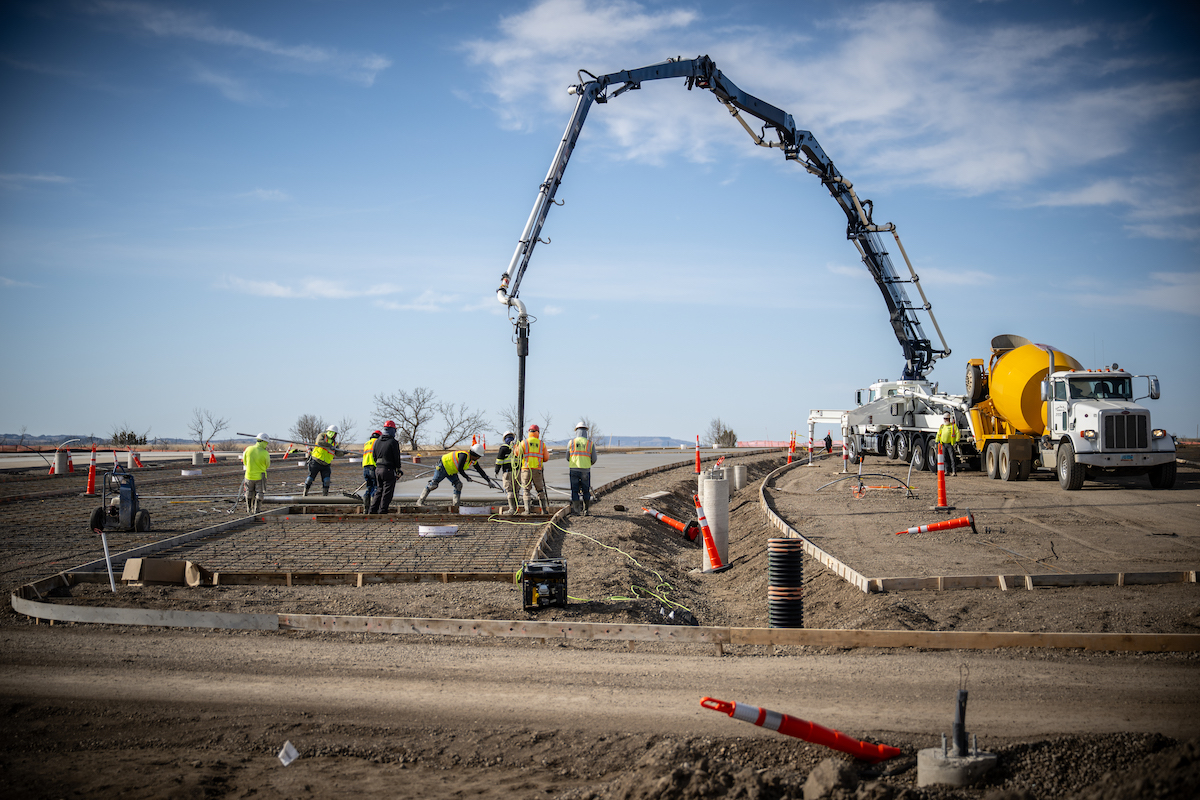U.S. 1, the longest north-south road in the United States, runs through Philadelphia. As part of the project, a nearly half-mile stretch of U.S. 1 is being rehabilitated. The entire stretch is a 15-span multi-steel girder structure consisting of four units; a seven-span unit, two three-span units, and two simple span units.
The five-lane bridge, which has an elevation range of 20 to 40-plus feet, has a poor rating. Some expansion joints were beginning to fail.
The project aims to repair and rehabilitate the viaduct’s structural components, repaint the steel superstructure with a new three coat paint system, and replace its concrete deck – which will increase the bridge’s rating. Additional project components include rehabbing supporting piers and abutments and painting them a color that complements the new color that will be applied to the viaduct’s structural steel. Ten expansion joints – at existing pin and hanger locations – are being eliminated, which will reduce future water damage to the substructure.
A second structure, the Fox Street Bridge, which runs over the U.S. 1, is also being rehabilitated. The work includes putting in new deck joints, roadway paving, and straightening a girder that was hit. The intersection at Fox Street will be redone and have a new traffic sign and eight new ADA compliant ramps.

| Your local Trimble Construction Division dealer |
|---|
| SITECH Northwest |
Other project components include the installation of LED lighting and 25 sign structures. The signs, which are as far as a mile away from the project, include five that stretch across the entire U.S. 1 width.
“The pin and hanger hinges have to be done in a specific sequence so as not to overstress the bridge,” says Anthony DeSantis, a Project Manager with South State, Inc., the general contractor on the project. The team is following the plan laid out by PennDOT’s design engineers.
To remove and replace the pin and hangar joints and bearings, the bridge is being lifted from 1/16 of an inch to 1/8 of an inch. Girder jacking towers are being used to lift the bridge. There have been up to 40 on-site at one time.
“The hydraulic jacking towers are installed to support the existing bridge beams while the bearings or pin and hanger hinges are removed and replaced,” DeSantis says.
Over 125,000 motorists use this section of U.S. 1, and the road could not be shut down. To maintain access to the road, the project is being completed in six stages: five stages to remove and replace the bridge deck and the final stage to install the permanent median barrier. Some of the work stages are taking place in a 9-foot-wide area. This leaves a limited amount of room to work, according to DeSantis.

| Your local Volvo Construction Equipment dealer |
|---|
| Nuss Truck & Equipment |
Beneath the structure, there are five roadways, six SEPTA (regional transportation authority) train tracks, and one CSX track. Working over SEPTA’s facilities presents a challenge due to the four-hour window in which the crews are permitted to perform construction activities. The 4-hour work time is frequently one and a half to three hours due to SEPTA shutting down after the last train and opening the tracks prior to the first train.
Besides the time constraints, it’s especially important to be mindful of falling debris. To mitigate debris falling, the team installed a safespan shield. The 80-foot-wide shield hangs down from one end of the bridge to the other and collects debris, so nothing falls on the road or railway. It covers a total of 200,000 square feet and took approximately five months to install. “We’ve used safespan shields on previous projects, but this is the biggest shield I’ve ever worked with,” DeSantis says.
Typically, concrete can’t be poured in the winter months. “We developed a Concrete Winter protection plan and presented it to PennDOT,” says DeSantis. The plan was approved. South State was able to pour the concrete by using portable heaters and insulated concrete blankets. The heater hoses are placed over the poured concrete and covered by blankets. This status is maintained for one to two weeks while concrete cures. The temperature needs to be kept between 50 degrees and 80 degrees as per PennDOT specifications.
The $88.5 million project is slightly over budget. Financing has come via the traditional 80/20 split between the federal and state government. To date, the biggest increase in the contract amount has been attributed to the presence of shear studs on the southbound structure, which changed the scope of removing the existing bridge deck.
When the rehabilitation of the U.S.1 bridge and Fox Street Bridge are complete, motorists along the Philadelphia roadway will enjoy a smoother ride. The bridges will be free of potholes and will have better structural support. The new lighting, ADA-compliant intersection, and signage will make traveling the area easy and clear.

| Your local Gomaco dealer |
|---|
| Hayden-Murphy Equipment Co |









































































